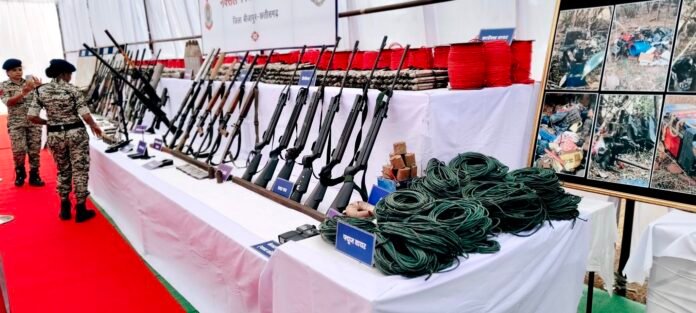Raipur, Oct. 15 – The fight against Maoist rebels in Chhattisgarh is showing new cracks. Police officials say around 100 Maoists are expected to surrender in Kanker district, a move that could signal the beginning of a “Naxal‑free” zone in the region.
The news follows a recent wave of defections that has already weakened Naxalite strongholds in Sukma and north Bastar. A senior police officer, speaking on condition of anonymity, confirmed that the Maoists have “came forward en‑mass in Kanker.” He added that the full details would be released after verification, but authorities are preparing an official statement.
Security forces behind the surrender have set up several police camps across Bastar’s interior and are applying the state’s new rehabilitation policy and the “Niyad Nellanar” scheme. These initiatives aim to win the trust of local communities while offering a path out for insurgents.
The most headline‑making incident happened on Monday when notorious Naxalite leader Raju Salam and his entire Company No. 5 team walked into a BSF camp at Kamteda under Koylibeda police station’s watch. The surrender, which involved more than 100 Maoists arriving in three buses, is described by officials as the largest drop in rebel numbers since operations began in the state.
Among those who laid down arms were Raju Salam and fellow commander Rajman, each with a Rs 25‑lakh bounty on their heads. The group also includes 30 fighters with rewards over Rs 5 lakh, and several others who have operated in sensitive areas such as the Mad Division and the Raoghat Area Committee.
In parallel, female Naxalite Geeta—also known as Kamli Salam—surrendered in Kondagaon district after a Rs 5‑lakh reward was offered. Her departure adds to the momentum behind the anti‑Naxal campaign.
Security agencies say the hostile fighters were taken from Gendabeda village to the Kamteda BSF camp via a secret route, escorted by an Inspector General of Police, senior officers and BSF troops. Although the planned surrender date was Oct. 15, it was postponed by a day for safety reasons.
Experts attribute the success of these operations to a combination of heavy policing, smart rehabilitation schemes and strong local support. When the government secures an area, it is more likely to turn it into a “Naxal‑free” zone, both for the safety of residents and for the stability of the state.
The official statement is expected shortly, but the surrender of over a hundred Maoists, along with high‑profile leaders, already signals a turning point in the long‑standing Maoist insurgency in Chhattisgarh.
Source: ianslive
Stay informed on all the latest news, real-time breaking news updates, and follow all the important headlines in world News on Latest NewsX. Follow us on social media Facebook, Twitter(X), Gettr and subscribe our Youtube Channel.



